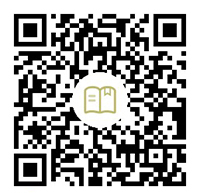Python 中检查字典中是否有多个键
检查字典中是否有多个键:
- 使用生成器表达式迭代包含键的元组。
-
使用
in运算符检查每个键是否在字典中。 -
将结果传递给
all()函数。
my_dict = {
'name': 'Alice',
'country': 'Austria',
'age': 30
}
# ✅ check if multiple keys in dict using all()
if all(key in my_dict for key in ("name", "country")):
# 👇️ this runs
print('multiple keys are in the dictionary')
# ----------------------------------------------
# ✅ check if multiple keys in dict using set object
if {'name', 'country'} <= my_dict.keys():
# 👇️ this runs
print('multiple keys are in the dictionary')

我们将要测试的多个键包装在一个元组中,并使用生成器表达式迭代元组。
生成器表达式用于对每个元素执行某些操作或选择满足条件的元素子集。
在每次迭代中,我们使用 in 运算符来检查字典中是否存在当前键。
in 运算符测试成员资格。 例如,如果 k 是 d 的成员,则 k in d 的计算结果为 True,否则计算结果为 False。
与字典一起使用时,运算符会检查字典对象中是否存在指定键。
my_dict = {
'name': 'Alice',
'country': 'Austria',
'age': 30
}
print('name' in my_dict) # 👉️ True
print('another' in my_dict) # 👉️ False
最后一步是将生成器对象传递给 all() 函数。
my_dict = {
'name': 'Alice',
'country': 'Austria',
'age': 30
}
if all(key in my_dict for key in ("name", "country")):
# 👇️ this runs
print('multiple keys are in the dictionary')
all() 内置函数将可迭代对象作为参数,如果可迭代对象的所有元素都为真(或可迭代对象为空),则返回 True。
如果字典中存在所有键,则 all() 函数将返回 True,否则返回 False。
my_dict = {
'name': 'Alice',
'country': 'Austria',
'age': 30
}
# 👇️ True
print(all(key in my_dict for key in ('name', 'country')))
# 👇️ False
print(all(key in my_dict for key in ('another', 'country')))
或者,我们可以使用集合对象。
使用 set 检查字典中是否有多个键
检查字典中是否有多个键:
- 将键包装在一个集合对象中。
-
使用
dict.keys()方法来查看字典的键。 - 检查字典键的视图中是否存在多个键。
my_dict = {
'name': 'Alice',
'country': 'Austria',
'age': 30
}
if {'name', 'country'} <= my_dict.keys():
# 👇️ this runs
print('multiple keys are in the dictionary')
我们使用花括号将键作为元素添加到集合对象中。
集合对象是唯一元素的无序集合
使用集合的好处是我们可以检查集合中的元素是否是另一个序列的子集,例如 字典键的视图。
dict.keys 方法返回字典键的新视图。
my_dict = {
'name': 'Alice',
'country': 'Austria',
'age': 30
}
# 👇️ dict_keys(['name', 'country', 'age'])
print(my_dict.keys())
小于或等于符号 <= 检查集合对象是否是字典键视图的子集。
my_dict = {
'name': 'Alice',
'country': 'Austria',
'age': 30
}
if {'name', 'country'} <= my_dict.keys():
# 👇️ this runs
print('multiple keys are in the dictionary')
使用 <= 的替代方法是使用 set.issubset() 方法。
my_dict = {
'name': 'Alice',
'country': 'Austria',
'age': 30
}
if {'name', 'country'}.issubset(my_dict.keys()):
# 👇️ this runs
print('multiple keys are in the dictionary')
set.issubset 方法测试集合中的每个元素是否都在提供的序列中。
相关文章
Python pandas.pivot_table() 函数
发布时间:2024/04/24 浏览次数:82 分类:Python
-
Python Pandas pivot_table()函数通过对数据进行汇总,避免了数据的重复。
在 Python 中将 Pandas 系列的日期时间转换为字符串
发布时间:2024/04/24 浏览次数:894 分类:Python
-
了解如何在 Python 中将 Pandas 系列日期时间转换为字符串
在 Python Pandas 中使用 str.split 将字符串拆分为两个列表列
发布时间:2024/04/24 浏览次数:1124 分类:Python
-
本教程介绍如何使用 pandas str.split() 函数将字符串拆分为两个列表列。
在 Pandas 中将 Timedelta 转换为 Int
发布时间:2024/04/23 浏览次数:231 分类:Python
-
可以使用 Pandas 中的 dt 属性将 timedelta 转换为整数。
Python 中的 Pandas 插入方法
发布时间:2024/04/23 浏览次数:112 分类:Python
-
本教程介绍了如何在 Pandas DataFrame 中使用 insert 方法在 DataFrame 中插入一列。
使用 Python 将 Pandas DataFrame 保存为 HTML
发布时间:2024/04/21 浏览次数:106 分类:Python
-
本教程演示如何将 Pandas DataFrame 转换为 Python 中的 HTML 表格。
如何将 Python 字典转换为 Pandas DataFrame
发布时间:2024/04/20 浏览次数:73 分类:Python
-
本教程演示如何将 python 字典转换为 Pandas DataFrame,例如使用 Pandas DataFrame 构造函数或 from_dict 方法。
如何在 Pandas 中将 DataFrame 列转换为日期时间
发布时间:2024/04/20 浏览次数:101 分类:Python
-
本文介绍如何将 Pandas DataFrame 列转换为 Python 日期时间。

